| Weight | 1 lbs |
|---|---|
| Dimensions | 9 × 5 × 2 in |
| host | mouse |
| isotype | IgG |
| clonality | monoclonal |
| concentration | concentrate, predilute |
| applications | IHC |
| reactivity | human |
| available size | 0.1 mL, 0.5 mL, 1 mL concentrated, 7 mL prediluted |
rabbit anti-Villin monoclonal antibody (ZR155) 6402
Price range: $160.00 through $528.00
Antibody summary
- Rabbit monoclonal to Villin
- Suitable for: Immunohistochemistry (formalin-fixed, paraffin-embedded tissues)
- Reacts with: Human
- Isotype:IgG
- Control: Colon carcinoma, small intestine
- Visualization: Cytoplasmic
- 0.1, 0.5, 1.0 mL concentrated, 7 mL prediluted
rabbit anti-Villin monoclonal antibody ZR155 6402
| target relevance |
|---|
| Protein names Villin-1 |
| Gene names VIL1,VIL1 VIL |
| Protein family Villin/gelsolin family |
| Mass 92695Da |
| Function FUNCTION: Epithelial cell-specific Ca(2+)-regulated actin-modifying protein that modulates the reorganization of microvillar actin filaments. Plays a role in the actin nucleation, actin filament bundle assembly, actin filament capping and severing. Binds phosphatidylinositol 4,5-bisphosphate (PIP2) and lysophosphatidic acid (LPA); binds LPA with higher affinity than PIP2. Binding to LPA increases its phosphorylation by SRC and inhibits all actin-modifying activities. Binding to PIP2 inhibits actin-capping and -severing activities but enhances actin-bundling activity. Regulates the intestinal epithelial cell morphology, cell invasion, cell migration and apoptosis. Protects against apoptosis induced by dextran sodium sulfate (DSS) in the gastrointestinal epithelium. Appears to regulate cell death by maintaining mitochondrial integrity. Enhances hepatocyte growth factor (HGF)-induced epithelial cell motility, chemotaxis and wound repair. Upon S.flexneri cell infection, its actin-severing activity enhances actin-based motility of the bacteria and plays a role during the dissemination. {ECO:0000269|PubMed:11500485, ECO:0000269|PubMed:14594952, ECO:0000269|PubMed:15084600, ECO:0000269|PubMed:15272027, ECO:0000269|PubMed:15342783, ECO:0000269|PubMed:16921170, ECO:0000269|PubMed:17182858, ECO:0000269|PubMed:17229814, ECO:0000269|PubMed:17606613, ECO:0000269|PubMed:18054784, ECO:0000269|PubMed:18198174, ECO:0000269|PubMed:19808673, ECO:0000269|PubMed:3087992}. |
| Subellular location SUBCELLULAR LOCATION: Cytoplasm, cytoskeleton. Cell projection, lamellipodium. Cell projection, ruffle. Cell projection, microvillus. Cell projection, filopodium tip {ECO:0000250}. Cell projection, filopodium {ECO:0000250}. Note=Relocalized in the tip of cellular protrusions and filipodial extensions upon infection with S.flexneri in primary intestinal epithelial cells (IEC) and in the tail-like structures forming the actin comets of S.flexneri. Redistributed to the leading edge of hepatocyte growth factor (HGF)-induced lamellipodia (By similarity). Rapidly redistributed to ruffles and lamellipodia structures in response to autotaxin, lysophosphatidic acid (LPA) and epidermal growth factor (EGF) treatment. {ECO:0000250}. |
| Tissues TISSUE SPECIFICITY: Specifically expressed in epithelial cells. Major component of microvilli of intestinal epithelial cells and kidney proximal tubule cells. Expressed in canalicular microvilli of hepatocytes (at protein level). {ECO:0000269|PubMed:14550699, ECO:0000269|PubMed:3453110}. |
| Structure SUBUNIT: Monomer. Homodimer; homodimerization is necessary for actin-bundling. Associates with F-actin; phosphorylation at tyrosine residues decreases the association with F-actin. Interacts (phosphorylated at C-terminus tyrosine phosphorylation sites) with PLCG1 (via the SH2 domains). Interacts (phosphorylated form) with PLCG1; the interaction is enhanced by hepatocyte growth factor (HGF) (By similarity). {ECO:0000250}. |
| Post-translational modification PTM: Tyrosine phosphorylation is induced by epidermal growth factor (EGF) and stimulates cell migration (By similarity). Phosphorylated on tyrosine residues by SRC. The unphosphorylated form increases the initial rate of actin-nucleating activity, whereas the tyrosine-phosphorylated form inhibits actin-nucleating activity, enhances actin-bundling activity and enhances actin-severing activity by reducing high Ca(2+) requirements. The tyrosine-phosphorylated form does not regulate actin-capping activity. Tyrosine phosphorylation is essential for cell migration: tyrosine phosphorylation sites in the N-terminus half regulate actin reorganization and cell morphology, whereas tyrosine phosphorylation sites in the C-terminus half regulate cell migration via interaction with PLCG1. {ECO:0000250, ECO:0000269|PubMed:11500485, ECO:0000269|PubMed:12269817, ECO:0000269|PubMed:16921170, ECO:0000269|PubMed:17229814}. |
| Domain DOMAIN: Consists of a large core fragment in the N-terminal portion and a small headpiece (HP) in the C-terminal portion. The core fragment is necessary for both actin-nucleating and -severing activities, whereas the HP binds F-actin strongly in both the presence and absence of calcium and is necessary in actin-bundling activity. The Gelsolin-like 1 repeat is necessary for the actin-capping activity. The entire core fragment is necessary for the actin-severing activity. Two major calcium-sensitive sites are involved in conformational changes and determine separate functional properties: the first site (Glu-25, Asp-44 and Glu-74) regulates the actin-capping and actin-severing activities; while the second site (Asp-61, Asp-86 and Ala-93) regulates only the actin-severing activity. |
| Involvement in disease DISEASE: Note=Biliary atresia is a chronic and progressive cholestatic liver disease of chilhood characterized by an abnormal villin gene expression and severe malformation of canalicular microvillus structure. |
| Target Relevance information above includes information from UniProt accession: P09327 |
| The UniProt Consortium |
Data
 |
| Formalin-fixed, paraffin-embedded human colon stained with anti-villin antibody using peroxidase-conjugate and DAB chromogen. Note brush border and cytoplasmic staining of epithelial cells |
Publications
| pmid | title | authors | citation |
|---|---|---|---|
| We haven't added any publications to our database yet. | |||
Protocols
| relevant to this product |
|---|
| IHC |
Documents
| # | SDS | Certificate | |
|---|---|---|---|
| Please enter your product and batch number here to retrieve product datasheet, SDS, and QC information. | |||
Only logged in customers who have purchased this product may leave a review.

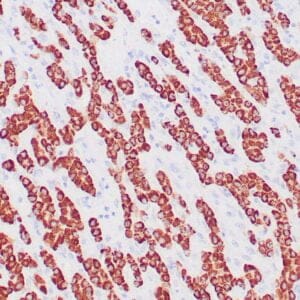
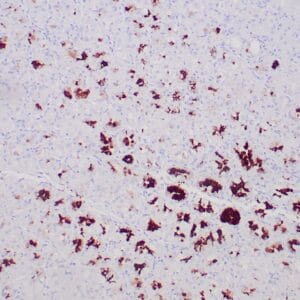
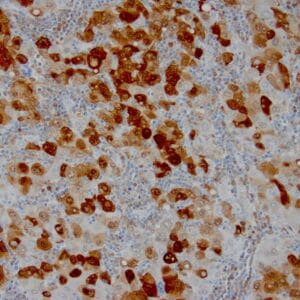
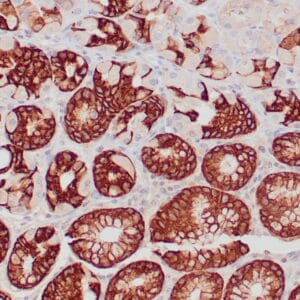
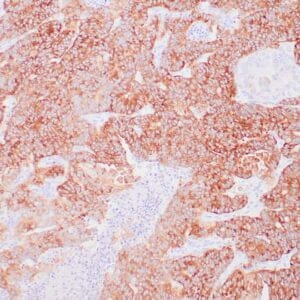
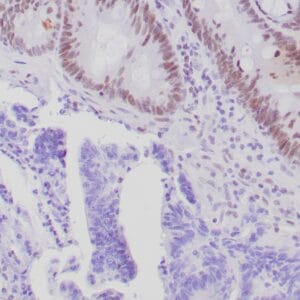

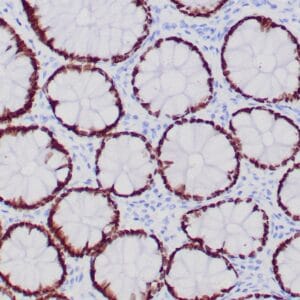
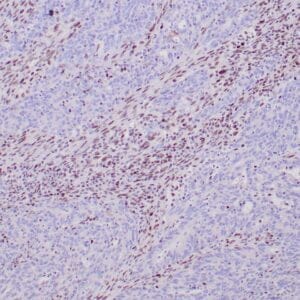
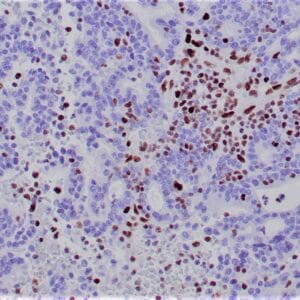

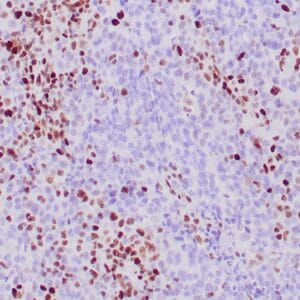
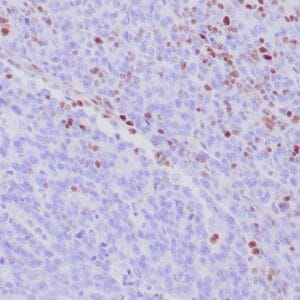
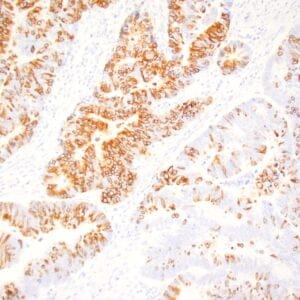
Reviews
There are no reviews yet.